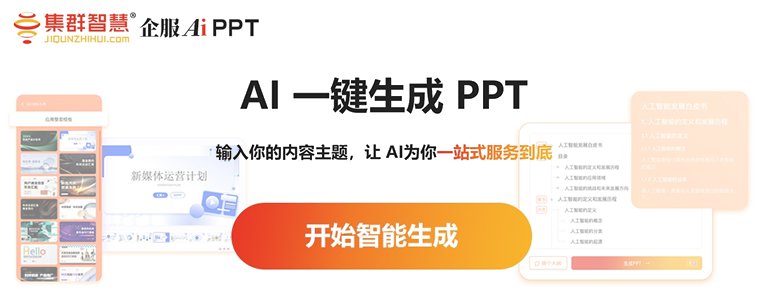XingyuJiang
| 姓名 | XingyuJiang |
| 教师编号 | 20895 |
| 性别 | 发明专利4999代写全部资料 |
| 学校 | 南方科技大学 |
| 部门 | Department of Biomedical Engineering Research Group |
| 学位 | 发明专利包写包过 特惠申请 |
| 学历 | 版权登记666包过 代写全部资料 |
| 职称 | Chair Professor |
| 联系方式 | 【了解更多】 |
| 邮箱 | 【了解更多】 |
| 人气 | |
| 软件产品登记测试 软件著作权666元代写全部资料 实用新型专利1875代写全部资料 集群智慧云企服 / 知识产权申请大平台 微信客服在线:543646 急速申请 包写包过 办事快、准、稳 |
|
Home People Research Research Publications Teaching Protocol Sharing News Center for Pain Medicine Research Brief Info Software Alumni Join us Contact us Xingyu Jiang ResearcherID Chair Professor Department of Biomedical Engineering Research Group Professor Xingyu Jiang received his Bachelor's degree in Chemistry from the University of Chicago in 1999 and his Ph.D. from Harvard University in 2004. In 2005, he began an independent career at the National Center for Nanoscience and Technology (Chinese Academy of Sciences). In 2018, he was appointed as a Chair Professor at the Southern University of Science and Technology. Professor Xingyu Jiang was awarded the National Science Fund for Distinguished Young Scholars in 2010. He was an Innovative Talent Scholar by the Ministry of Science and Technology, and serves as a Chief Scientist of the National Key Research and Development Plan of the Ministry of Science and Technology. He received a Scientific Exploration Award from the Tencent Foundation. He was elected as a fellow of the Royal Society of Chemistry (UK) and American Society for Medical and Biological Engineering. He has published more than 400 papers, has over 200 invention patents. His main research areas include microfluidic chips and nanomedicine. Personal Profile Education: Postdoctoral Research, Harvard University (2004-2005) Ph.D. in Chemistry, Harvard University (2004) B.S. in Chemistry, the University of Chicago (1999). Work Experience: Southern University of Science and Technology, 2018-Present. National Center for Nanoscience and Technology (Chinese Academy of Sciences), 2005-2018. Research Interests: Analytical Chemistry; Microfluidics; Nanomedicine. Journal Editorial Roles: Editorial Board Member of Advanced Healthcare Materials and Lab on a Chip Major Awards/Research Projects: Fellow of the American Institute for Medical and Biological Engineering, 2020. Tencent "Science Exploration Award", 2019. Chief Scientist, National Key Research and Development Program of the Ministry of Science and Technology, 2019. Fellow of the Royal Society of Chemistry, 2016. National Science Fund for Distinguished Young Scholars , 2010. Young Investigator, Human Frontiers Science Foundation, 2007. Personal Profile Research Analytical Chemistry; Microfluidics; Nanomedicine. Teaching Introduction to Nano-Biomedicine Publications Read More Researcher Jiang Xingyu won the “National Outstanding Youth Science Fund” in 2010, the special government allowance from the State Council in 2014, and the “Innovative Talent Promotion Plan of the Ministry of Science and Technology”; The Chemistry Prize was selected into the “Hundred Talents Program” of the Academy of Sciences. Published more than 380 papers. His research interests include microfluidic chips and nanobiomedicine. Representative papers: 25. Microfluidics-enabled Serial Assembly of Lipid-siRNA-sorafenib Nanoparticles for Synergetic Hepatocellular Carcinoma Therapy, Chen Y, Zhao D, Xiao F, Li XY, Li J, Su ZW, Jiang XY*, Advanced Materials, 2209672 (2023) 24. In Situ Reprogramming of Tumor-Associated Macrophages with Internally and Externally Engineered Exosomes, Lingmin Zhang, Yinshan Lin, Songpei Li, Xiaoling Guan, Xingyu Jiang*, Angew Chem Int Ed, 62, e202217089.(2023) 23. Ultrasensitive point-of-care biochemical sensor based on metal-AIEgen frameworks, Zhang JJ, Li Y, Li QZ, Wang D, Liu LP, Tang BZ*, Jiang XY*, Science Advances, 8, eabo1874 (2022) 22. Thermo-triggered release of CRISPR-Cas9 system by lipid-encapsulated gold nanoparticles for tumor therapy, Wang P, Zhang LM, Zheng WF, Cong LM, Guo ZR, Xie YZY, Wang L, Tang RB, Feng Q, Hamada Y, Gonda K, Hu ZJ, Wu XC, Jiang XY, Angew Chem Int Ed, 57, 1491-1496. (2018). 21. Skiving stacked sheets of paper into test paper for rapid and multiplexed assay, Yang MZ, Zhang W, Yang JC, Hu BF, Cao FJ, Zheng WS, Chen YP, Jiang XY, Science Advances, 3, eaao4862. (2017). 20. Self-adjusting, polymeric multilayered roll that can keep the shapes of the blood vessel scaffolds during biodegradation, Cheng SY, Jin Y, Wang NX, Cao F, Zhang W, Bai W, Zheng WF, Jiang XY, Adv Mater, 29(28), 1700171. (2017). 19. Gold nanoclusters-assisted delivery of NGF siRNA for effective treatment of pancreatic cancer, Lei YF, Tang LX, Xie YZY, Xianyu YL, Zhang LM, Wang P, Hamada Y, Jiang K, Zheng WF, Jiang XY, Nature Communications, 8, 15130. (2017). 18. Surface modification of gold nanoparticles with small molecules for biochemical analysis, Chen YP, Xianyu YL, Jiang XY, Accounts Chem Res, 50(2), 310-319. (2017). 17. Microfluidic synthesis of rigid nanovesicles for hydrophilic reagents delivery, Zhang L, Feng Q, Wang JL, Sun JS, Shi XH, Jiang XY. Angew Chem Int Ed, 54(13), 3952-3956. (2015). 16. Tunable rigidity of (polymeric core)-(lipid shell) nanoparticles for regulated cellular uptake, Sun JS, Zhang L, Wang JD, Feng Q, Liu DB, Yin QF, Xu DY, Wei YJ, Ding BQ, Shi XH, Jiang XY, Adv Mater, 27(8), 1402-1407. (2015). 15. Tuning the composition of AuPt bimetallic nanoparticles for antibacterial application, Zhao Y, Ye C, Liu W, Chen R, Jiang XY, Angew Chem Int Ed, 53(31), 8127-8131. (2014). (Inside Cover) 14. Identification of bacteria in water by a fluorescent array, Chen WW, Li QZ, Zheng WS, Hu F, Zhang GX, Wang Z, Zhang DQ, Jiang XY, Angew Chem Int Ed, 53(50), 13734-13739. (2014). 13. Point-of-care biochemical assays using gold nanoparticle-implemented microfluidics, Sun JS, Xianyu YL, Jiang XY, Chem Soc Rev, 43(17), 6239-6253. (2014). 12. Synergy of non-antibiotic drugs and pyrimidinethiol on gold nanoparticles against superbugs, Zhao YY, Chen ZL, Chen YF, Xu J, Li JH, Jiang XY, J Am Chem Soc, 135(35), 12940-12943. (2013). 11. Nanomaterials for ultrasensitive protein detection, Zhang Y, Guo YM, Xianyu YL, Chen WW, Zhao YY, Jiang XY, Adv Mater, 25(28), 3802-3819. (2013). 10. A Strategy for the construction of controlled, three-dimensional, multilayered, tissue-like structures, Gong PY, Zheng WF, Huang Z, Zhang W, Xiao D, Jiang XY, Adv Funct Mater, 23(1), 42-46. (2013). 9. Resettable, multi-readout logic gates based on controllably reversible aggregation of gold nanoparticles, Liu DB, Chen WW, Sun K, Deng K, Zhang W, Wang Z, Jiang XY, Angew Chem Int Ed, 50(18), 4103-4107. (2011). 8. Copper-mediated amplification allows readout of immunoassays by the naked eye, Qu WS, Liu YY, Liu DB, Wang Z, Jiang XY, Angew Chem Int Ed, 50(15), 3442-3445. (2011). 7. Small molecule-capped gold nanoparticles as potent antibacterial agents that target gram-negative bacteria, Zhao YY, Tian Y, Cui Y, Liu WW, Ma WS, Jiang XY, J Am Chem Soc, 132(35), 12349-12356. (2010). 6. Patterning mammalian cells for modeling three types of naturally occurring cell-cell interactions, Chen ZL, Li Y, Liu WW, Zhang DZ, Zhao YY, Yuan B, Jiang XY, Angew Chem Int Ed, 48(44), 8303-8305. (2009). 5. Using azobenzene-embedded self-assembled monolayers to photochemically control cell adhesion reversibly, Liu DB, Xie YY, Shao HW, Jiang XY, Angew Chem Int Ed, 48(24), 4406-4408. (2009). 4. Visual detection of copper(II) by azide- and alkyne-functionalized gold nanoparticles using click chemistry, Zhou Y, Wang SX, Zhang K, Jiang XY, Angew Chem Int Ed, 47(39), 7454-7456. (2008). 3. Electrospun nanofibrous membranes: a novel solid substrate for microfluidic immunoassays for HIV, Yang DY, Niu X, Liu YY, Wang Y, Gu X, Song LS, Zhao R, Ma LY, Shao YM, Jiang XY, Adv Mater, 20(24), 4770-4775. (2008). 2. Fabrication of aligned fibirous arrays by magnetic electrospinning, Yang DY, Lu B, Zhao Y, Jiang XY, Adv Mater, 19(21),3702-3706. (2007). 1. A method for patterning multiple types of cells by using electrochemical desorption of self-assembled monolayers within microfluidic channels, Li Y, Yuan B, Ji H, Han D, Chen SQ, Tian F, Jiang XY, Angew Chem Int Ed, 46(7), 1094-1096. (2007). People Read More PrevNext UpDown Join us The Department of Biomedical Engineering, Southern University of Science and Technology, seeks outstanding applicants for full-time tenure-track/tenured positions. The positions are open for both junior and senior-level applicants. While exceptional candidates in any area are welcome to apply, the primary focus for this search is in the areas of biomedical/medical imaging, bioMEMS, mechanomedicine, regenerative medicine, wearable devices/wireless monitoring, and biomedical data science. We are especially interested in individuals who can contribute to the excellence and diversity of our academic community. Further information of the department and facilities can be found at http://bme.sustc.edu.cn/.An outstanding start-up package will be provided for the successful candidate. Applicants must have earned Ph.D. degree in biomedical engineering or a relevant field, and demonstrated excellent qualifications in research and education. Review of applications will begin immediately and continue until the positions are filled.All applicants should submit the following documents to bmehr@sustech.edu.cn in PDF format: (1) a detailed resume, (2) a statement of research and teaching interests, (3) up to three representative publications, and (4) the names and contact information of at least three references.Established in 2012, the Southern University of Science and Technology (SUSTech) is a public institution funded by the City of Shenzhen, , 17 min by high speed train from Hong Kong. Shenzhen is China's fast-growing city in the past two decades, having become the city with the highest per capita revenue from a fishing village. The city is the high-tech and manufacturing hub of China.The Southern University of Science and Technology is a pioneer in higher education reform in China. The mission of the University is to become a globally recognized institution which emphasizes academic excellence and promotes innovation, creativity and entrepreneurship. The teaching language at SUSTech is bilingual, either English or Mandarin. According to Times Higher Education World University Ranking 2019, SUSTech ranked the 8th in mainland China. Read More Contact Us Contact Address No 1088,xueyuan Rd., Xili, Nanshan District,Shenzhen,Guangdong,China Office Phone +86-755-88015282 Email jiang@sustech.edu.cn |
- 上一篇:JunminJiang
- 下一篇:associateprofessor


